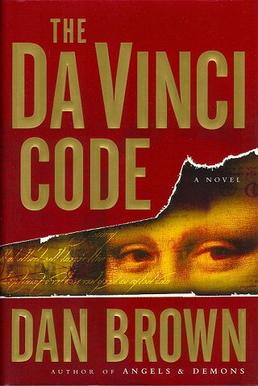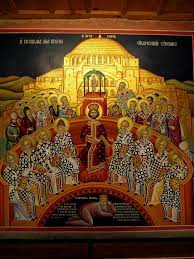The Rev. Dr. Stephen Noll
NOTE: I attended my second ever (and last ever) General Convention in Minneapolis and wrote this as a farewell reflection on leaving for Uganda in September 2000. The trajectory taken by the Episcopal Church in 2000 has come to completion with the authorization of same-sex marriage rites in 2015.
Is it permissible in the will of God for two persons to enter into a sexual relationship outside the bond of Holy Matrimony? What is the official position (de jure) of the Episcopal Church on this question? Has this position changed as a result of the passage of Resolution D039 at the July 2000 General Convention in Denver? I have concluded that the answer is yes: the official position has changed from technical (de jure) orthodoxy to a pluriformity on the way to a new norm recognizing homosexual relationships as in accordance with the will of God. Not surprisingly perhaps, pluriformity tilting toward revisionism is the stated position of the Presiding Bishop, who seems to embody the Zeitgeist of the contemporary Episcopal Church.
It is common knowledge that there has been a reality gap between the de jure and the de facto positions of the Episcopal Church on homosexuality for almost 25 years. Beginning in 1978 (Bishop Paul Moore of New York) and then again in 1989 (Bishop John Spong of Newark), revisionist bishops took it upon themselves to violate the biblical and historic moral norms of the Church. The General Convention and House of Bishops responded, respectively, with ineffective instruments: a Resolution disapproving ordination of practicing homosexuals (1979) and a statement of disassociation from Spong’s actions (1990). Bishop Walter Righter, Spong’s crony in Newark, defied the 1990 statement by ordaining another homosexual, and five years later orthodox bishops presented him for trial for violating the Church’s doctrine. The Court acquitted Righter and thus set a precedent for more bishops to follow where Spong had led.
Despite the ineffective attempts at discipline, conservatives, as late as July 2000, could make a credible case that the Episcopal Church formally held to biblical and historic standards of sexual morality. The 1979 Resolution still stood uncontradicted, and even the weak “Guidelines” of the 1994 General Convention upheld the “traditional teaching” of the Church on sexual morality.
Lambeth Resolution 1.10, of course, was a major international Anglican restatement of this traditional moral teaching, and the recent decisions of the Methodists and Presbyterians upheld and even strengthened this norm in their “Constitutions.” So there was at least an opportunity in July 2000 for the General Convention of the Episcopal Church to draw back from what seemed an increasingly overtacceptance of homosexuality.
This it did not do. Only a titanic effort by conservatives, along with the wish of the Presiding Bishop to avoid division of the church and confrontation with the international Communion, narrowly defeated Resolve 8 of Resolution D039, which would have authorized the development of same-sex rites. Conservatives paid a price for this victory. If they had fought the whole Resolution, they would have lost, and a new norm would have been established. In order to save the “technical virginity” of the Church, conservatives were forced to soft-pedal the significance of Resolves 1-7 for fear that Resolve 8 would be voted back in. (Another unfortunate result of their strategy was that the final majorities in both Houses in favor of Resolves 1-7 were far more lopsided than they would have been had they been taken on the entire Resolution.)
Resolves 1-7 move the Episcopal Church one step farther toward de jure endorsement of homosexuality. As an advocate of “plain sense” reading of texts, I have tried to exegete the Resolution in the most reasonable way (see Appendix). The fundamental issue is whether these Resolves are descriptive or prescriptive. Do they simply describe the divided state of the Episcopal Church, or do they set up a new norm? While I do think it is possible to read them as a simple description of the status quo, I think it more natural to read them as setting forth a moral paradigm that confers equal status on marriage and homosexual partnerships. While Resolution D039 does not clearly prescribe a new norm, the fact that the “traditional teaching” of the Church is now merely described rather than commended means that the old norm no longer carries authority. And this is a change. One can no longer appeal to the 1979 or the 1994 statements as the Episcopal Church’s position; they have been superseded by D039.
One may argue, as revisionists did with regard to the Lambeth Resolution, that resolutions carry no legal authority. This is true. We are not bound by every hare-brained resolution that comes out of General Convention. However, some resolutions carry more potential authority than others, and marriage and sexuality are areas where the Church’s teachings have relevant force. In the case of D039, it will be cited as the Church’s current position. If, for instance, a rector is sued under a local anti-gay discrimination ordinance for refusing same-sex couples access to leadership in his church, he might be hard put to justify that his position was in accordance with the official teaching of the Episcopal Church. He could have made a better case prior to D039.
Acceptance of homosexuality is at this point still only de facto. This constitutes the perhaps pyrrhic victory of the American Anglican Council and its allies at Convention. If de jure recognition of same-sex blessings is the issue on which the Church will break apart, then the question conservatives must ask themselves is: “Is it possible that the Episcopal Church will continue to hold back from the brink of official recognition?”; or “Have we bought ourselves some time to organize an alternative jurisdiction?”
The decision may be thrust upon conservatives before the next General Convention in 2003 if in the meantime it happens that an openly gay bishop is elected and approved by a majority of standing committees. Such an event, it seems to me, is roughly equivalent to the passage of Resolve 8, making homosexuality official. The Episcopal Church as a whole through its constitutional process will have said according to its constitution: “This man (or woman) along with his or her partner is a fit bishop of our church.”
In a parallel but relevant act, the General Convention set up of an inquisitiorial process to pressure those bishops and dioceses that still do not ordain women to conform to the newly revised Canon III.8.1. Canon III.8.1 was changed in 1997 so as to prohibit from leadership anyone who opposes women’s ordination. (This revision was in direct contradiction to the Eames Report of the Anglican Communion, which counseled diversity on the issue of women’s ordination.) The implementing of the women’s ordination canon is significant because it makes clear that if same-sex unions become official, they will soon be canonically enforced throughout the Church. Stern appeals were made to the effect that “we must uphold the canons.” Of course this is true, but in classic Anglican theology, canons have been seen as “human law,” applying the principles of divine and natural law. In a church where Scripture, tradition, and nature are denied their place, canonical fundamentalism and political maneuvering become the sole basis of authority.
Making acceptance of homosexuality mandatory will be easy once same-sex rites are approved. Such approval will automatically redefine the meaning of the word “sexual orientation.” The distinction between sexual orientation and sexual practice has been important in the debate since the 1970’s, whatever one thinks of the adequacy of the distinction. However, the moment the Church provides same-sex rites, it logically must understand “sexual orientation” to mean “sexual preference plus official approval.” How could one argue that a homosexual person who has received a church-approved “holy union” certificate is ineligible for church office on the basis of that certificate?
The canons are already in place which make it illegal to discriminate on the basis of sexual orientation (Canons 1.17.5 and 3.4.1). If and when the church approves same-sex blessing, it will be making it mandatory de jure throughout the church. It will immediately open clergy and parishes to civil lawsuits and to ecclesiastical discipline in dioceses which wish to enforce the new norm. Finally, it will certainly lead to the kind of movement which has occurred with women’s ordination: from apparent toleration to absolute prohibition. “The Church has made up its mind,” and “the canons must be obeyed” will become the order of the day.
I found it interesting that Integrity, the gay rights lobby, was not in favor of the “local option” resolution proposed prior to the Convention by the Standing Commission on Liturgy and Music. In effect, Integrity said: “No more Port St. Lucies!” (Port St. Lucie was the site of the House of Bishops meeting in 1978, where liberals assured traditionalist bishops that they might exercise local option on the matter of women’s ordination). At the Denver Convention, Integrity’s position seems to have been: “We would rather wait for church-wide and official acceptance of our agenda than take the half-loaf of local option, especially as we are already exercising local option de facto.”
How will this play out internationally? Certainly Bishop Griswold dodged a bullet by the defeat of Resolve 8. However, the Primates (archbishops representing the 38 jurisdictions of the Anglican Communion) may or may not recognize the current “technical virginity” of the Episcopal Church. The Primates have shown some patience with the discrepancy between the de facto state of the Episcopal Church and the de jure position of the Communion. But when it is the case that the Episcopal Church formally adopts a position which the Communion has declared “contrary to Scripture,” then the leaders of the Communion will have to decide whether this discontinuity is sufficient to justify breaking fellowship with the Episcopal Church. This is the same decision all of us within the Church will have to make also in one way or another.
After the 2000 General Convention, the position of the Episcopal Church on sex outside marriage changed from being technically orthodox to becoming officially pluriform. I trust that orthodox bishops, who have responsibility for the flock of Christ, have weighed these matters and will have some response ready if the Episcopal Church takes the final step from de facto to de jure recognition of homosexuality.
Appendix: What the Episcopal Church Now Says About Sex
An Exposition of Resolution D039 (July 2000)
The following Resolution, with seven clauses, was reported out unanimously by “Committee 25” of the 2000 General Convention of the Episcopal Church in Denver, Colorado. The Committee also recommended an eighth resolve clause, on a 3-3 vote of the bishops and 5-1 vote of the deputies. Resolution D039 was referred to the House of Deputies, where on a voice vote, the first seven clauses were passed, while on a separate “vote by orders,” the eighth clause failed by a vote of 53-51 in the clerical order and 51-55 in the lay order.
The following is the text of Resolution D039 with commentary on its meaning and significance.
1. Resolved, that the members of the 73rd General Convention intend for this Church to provide a safe and just structure in which all can utilize their gifts and creative energies for mission…
On the surface, this seems like an “apple pie” kind of statement. Who can object to a “safe” and “just” Church that pursues “mission”? In our Episcopal context, however, these three words have a pointed meaning. The call for a safe structure implies the existence of hostile, heterosexist structures and people that “exclude” those who practice homosexuality. It implies that any bishop or priest who refuses to accept a homosexual couple has made his diocese or church an unsafe place. In our context, just also presumes a particular reading of the Baptismal Covenant (BCP page 305) by which equal treatment of practicing homosexuals is taken to be a self-evident truth, a “justice” issue equivalent to racial equality. Finally, mission is a multivalent term that all can agree to only so long as the content and “substance” of the faith once delivered to the saints is undefined.
2. Resolved, we acknowledge that while the issues of human sexuality are not yet resolved, there are currently couples in the Body of Christ and in this Church who are living in marriage and couples in the Body of Christ and in this Church who are living in other life-long committed relationships…
This is a statement of fact – the presence of married and same-sex couples was obvious at the Denver Convention – but it carries with it an implication of moral equivalence between the two kinds of relationship. What this clause notably fails to say is that married couples are living with the explicit approval and blessing of Scripture, 2000 years of tradition, and an official marriage rite, whereas those living in other relationships are doing so without such approval and indeed with the disapproval of the vast consensus of Christians throughout history and the world today.
3. Resolved, we expect such relationships will be characterized by fidelity, monogamy, mutual affection and respect, careful, honest communication, and the holy love which enables those in such relationships to see in each other the image of God… Having suggested the moral equivalence of married and other committed relationships, the resolution goes on to summarize the essence of such relationships in terms of mutual love. Christian teaching on marriage has always included, alongside mutual love, another essential (if sometimes unfulfilled) purpose: the procreation of children. In Resolution D039, the rights and obligations of procreation and child-rearing go unmentioned. Other terms remain vague when extracted from the classic tradition. Does “monogamy” presume, for instance, that both heterosexual and homosexual people will be called to abstinence before entering into a committed relationship? Finally, the assertion that certain non-marital unions involve a “holy love” in which partners see in each other the divine image presumes the outcome of the conversation on sexuality in a certain direction. D039 calls holy what the main Christian tradition has always called immoral.
4. Resolved, we denounce promiscuity, exploitation and abusiveness in the relationships of any of our members…
This resolve, like the first one, is hard to disagree with, but it avoids “the elephant in the room”: does the church disapprove sex outside marriage (called porneia or fornication in the New Testament)? It is one thing to reject the abuses of the norm of marriage; it is another matter to change the norm. By strongly denouncing abuses while discreetly avoiding the question of whether marriage is the only permissible sexual relationship, the Episcopal Church appears to be nibbling around edges of the problem.
5. Resolved, this Church intends to hold all its members accountable to these values, and will provide for them the prayerful support, encouragement and pastoral care necessary to live faithfully by them…
Pastoral accountability is a crucial question for ordained clergy who vow to “be loyal to the doctrine, discipline, and worship of Christ as this Church has received them” (BCP, p. 526). One may ask: if a pastor guided by Resolution D039 were to encounter a homosexual couple in his parish, what kind of pastoral care would he be permitted to offer? Would he address matters only of “promiscuity, exploitation and abusiveness,” or might he urge the couple to be abstinent and seek help from an “ex-gay” ministry? And what if the couple rejected the latter advice and sought canonical and legal redress against him for abusing his pastoral office? It is quite possible that this Resolve would be used against many conscientious pastors.
6. Resolved, we acknowledge that some, acting in good conscience, who disagree with the traditional teaching of the Church on human sexuality, will act in contradiction to that position…
This is the first and only mention in the resolution of the Church’s “traditional teaching.” In 1994, the traditional teaching was upheld as normative, while it was admitted that there was a “discontinuous” position approving long-term homosexual relationships. In D039, however, the “traditional teaching” is given temporal but not moral priority. The two views are now morally equivalent.
7. Resolved, that in continuity with previous actions of the General Convention of this Church, and in response to the call for dialogue by the Lambeth Conference, we affirm that those on various sides of controversial issues have a place in the Church, and we reaffirm the imperative to promote conversation between persons of differing experiences and perspectives, while acknowledging the Church’s teaching on the sanctity of marriage.
There are conversations and there are conversations. The view taken by the vast majority of Christian churches today is that, while ongoing discussion about human sexuality may go forward, it can do so only in the context of conformity to the existing traditional moral norm. These are the rules presumed by Lambeth Resolution 1.10, which is alluded to in D039 with utter neglect of its normative clauses. These rules of dialogue are precisely what Bishop Spong and others have violated in the past decade. Resolve 7 not only acknowledges the hijacking of dialogue in the Episcopal Church but endorses it. Finally, it sets the terms of any future dialogue process along revisionist lines – not in terms of Scripture, tradition, ecumenical relationships, or even reason, but in terms of “experiences” and “perspectives.” Anyone who went through the Episcopal Church’s “Continuing the Dialogue” exercise in the early 90’s knows how such a process is predetermined to reach a certain outcome – namely, the approval of homosexuality.
*****
The following Resolve (#8) was not adopted as part of Resolution D039.
Resolved, that desiring to support relationships of mutuality and fidelity other than marriage which mediate the grace of God, the 73rd General Convention directs the Standing Commission on Liturgy and Music to prepare for consideration by the 74th General Convention rites for inclusion in the Book of Occasional Services by means of which the Church may express that support.
The controversial Eighth Resolve for developing same-sex rites was an implementation clause to the first seven. No one argued that it was logically inconsistent with the rest of the Resolution. Therefore if D039 makes a change in the Episcopal Church’s official teaching, it follows logically that the day will come when same-sex marriage will be approved in the Episcopal Church. Only by reversing D039 would the Episcopal Church reaffirm the classic biblical and historic Christian teaching on human sexuality.





